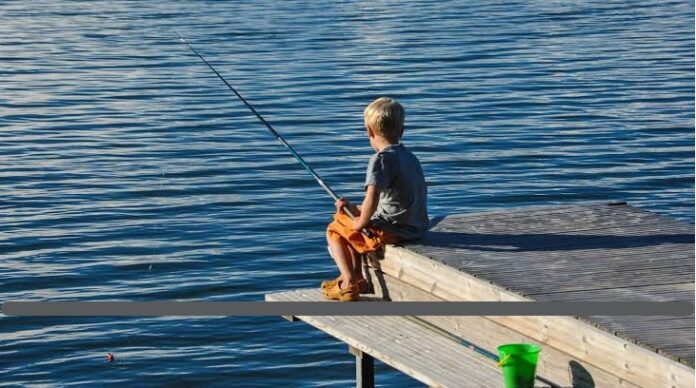Welcome to the world of Fiskning – a captivating fishing technique that promises adventure, skill, and the thrill of reeling in your catch. Whether you’re an experienced angler looking to try something new or a beginner eager to learn the ropes, Fiskning offers a unique approach to fishing that will have you hooked from the start. Join us as we dive into the ins and outs of Fiskning, exploring its history, equipment needed, best locations, tips for success, safety precautions, alternative forms, and more. Let’s embark on this exciting journey together!
Table of Contents
What is Fiskning?
Fiskning, derived from the Swedish word for fishing, is a specialized technique that combines elements of traditional angling with a modern twist. Unlike conventional fishing methods, Fiskning involves using a specially designed rod and reel system that allows for increased precision and control when casting and retrieving your bait. This innovative approach to fishing requires skill and finesse to master, making it an exciting challenge for anglers of all levels.
One of the key features of Fiskning is its emphasis on accuracy and timing – knowing when and where to cast your line can make all the difference in catching elusive fish. By honing your skills in casting techniques specific to Fiskning, you can increase your chances of success on the water.
Fiskning offers a fresh perspective on the age-old practice of fishing, blending tradition with innovation to create an engaging experience for outdoor enthusiasts everywhere.
History and Origins of Fiskning
Fiskning, a traditional Scandinavian fishing method, has deep historical roots that date back centuries. Originating in the Nordic countries where fishing is a way of life, Fiskning was initially developed as a sustainable means of catching fish for sustenance and trade.
The practice of Fiskning evolved over time as communities honed their skills and techniques to adapt to changing environments and fish populations. What started as a simple form of subsistence fishing gradually transformed into a respected tradition passed down through generations.
Historically, Fiskning was crucial for coastal communities’ survival, providing them with essential food sources while fostering a sense of connection to the sea. Today, this ancient method continues to thrive not only as a practical way to catch fish but also as an integral part of Scandinavian cultural heritage.
As anglers cast their lines using traditional methods reminiscent of past generations, they pay homage to the history and origins that shaped Fiskning into the beloved practice it is today.
Equipment Needed for Fiskning
When gearing up for a successful fiskning expedition, having the right equipment is key. You’ll need a sturdy fishing rod and reel designed for the type of fish you’re targeting. Make sure your line is strong enough to handle potential big catches.
A selection of various lures and bait will increase your chances of enticing different types of fish. Don’t forget to pack some extra hooks, sinkers, and swivels in case you need to switch things up based on the conditions.
Investing in a quality pair of polarized sunglasses can help reduce glare on the water’s surface, allowing you to spot fish more easily. A tackle box with compartments to organize your gear is essential for keeping everything in order while out on the water.
Comfortable clothing and footwear suitable for spending extended periods by the water will ensure you stay focused and enjoy your fiskning adventure to the fullest.
The Best Locations for Fiskning
When it comes to Fiskning, choosing the right location can make all the difference in your fishing experience. Scandinavian countries like Norway, Sweden, and Finland offer some of the best spots for Fiskning due to their abundance of pristine lakes and rivers teeming with fish.
In Norway, fjords provide a stunning backdrop for fishing adventures while in Sweden, the archipelagos along the coast offer diverse marine life to catch. Finland’s countless lakes are perfect for tranquil freshwater angling.
For those looking for a more exotic Fiskning experience, Iceland offers unique opportunities with its volcanic landscapes and icy waters hosting various species of fish. Additionally, Canada’s vast wilderness provides ample options for remote and challenging fishing excursions amidst breathtaking scenery.
Whether you prefer freshwater or saltwater fishing, there are endless possibilities around the world that cater to every angler’s preferences when it comes to Fiskning.
Tips and Techniques for Successful Fiskning
When it comes to successful Fiskning, there are a few tips and techniques that can help enhance your fishing experience.
Pay attention to the weather and water conditions as they can greatly impact the behavior of fish. Adjust your fishing strategy accordingly.
Be patient and observant. Sometimes waiting for the right moment or changing up your bait can make all the difference in catching a fish.
Additionally, understanding the habits of different fish species is key. Research their feeding patterns and preferred habitats to increase your chances of success.
Furthermore, don’t underestimate the importance of using proper equipment and maintaining it well. A well-prepared angler is more likely to have a fruitful fishing trip.
Practice catch-and-release whenever possible to preserve fish populations for future generations of anglers. Remember, Fiskning is not just about catching fish; it’s also about respecting nature and enjoying the experience.
Safety Precautions to Keep in Mind
When embarking on a Fiskning adventure, safety should always be a top priority. To ensure a successful and enjoyable fishing experience, there are some key precautions to keep in mind.
It’s essential to wear appropriate clothing and footwear that will provide comfort and protection while navigating the waters. Additionally, having a basic understanding of water safety practices can go a long way in preventing accidents or emergencies.
Always make sure to check the weather conditions before heading out for Fiskning. Sudden changes in weather can impact your fishing trip significantly, so it’s crucial to stay informed and prepared.
Furthermore, carrying essential gear such as life jackets, first aid kits, and communication devices can help you handle unexpected situations effectively. Being well-prepared is key to staying safe during your Fiskning excursion.
Never underestimate the power of nature. Always respect the environment you’re fishing in and follow any rules or regulations set forth by local authorities to ensure both your safety and the preservation of natural resources.
Alternative Forms of Fiskning
For those looking to spice up their fishing experience, alternative forms of fiskning offer exciting opportunities. Spearfishing is a thrilling method where divers hunt fish underwater using a speargun or pole spear. Ice fishing, popular in colder regions, involves drilling holes in frozen lakes and rivers to catch fish beneath the ice. Fly fishing is an elegant technique that uses artificial flies as lures, requiring precision casting skills.
Another unique approach is bowfishing, which combines archery and fishing by shooting fish with specially designed bows and arrows. Kayak fishing provides anglers with mobility on the water while getting close to the action. Jigging involves vertically jerking bait or lures in deep waters to entice fish. Each alternative form brings its own challenges and rewards for adventurous anglers seeking new experiences in the world of fiskning.
Conclusion
Fiskning offers anglers a unique and enjoyable way to fish in frozen waters. With the right equipment, techniques, and safety precautions in place, you can have a successful ice fishing experience. Whether you’re looking for a relaxing day on the ice or hoping to catch some impressive fish, Fiskning is definitely worth trying out. So bundle up, grab your gear, and head out to explore the frozen lakes for an unforgettable angling adventure!



